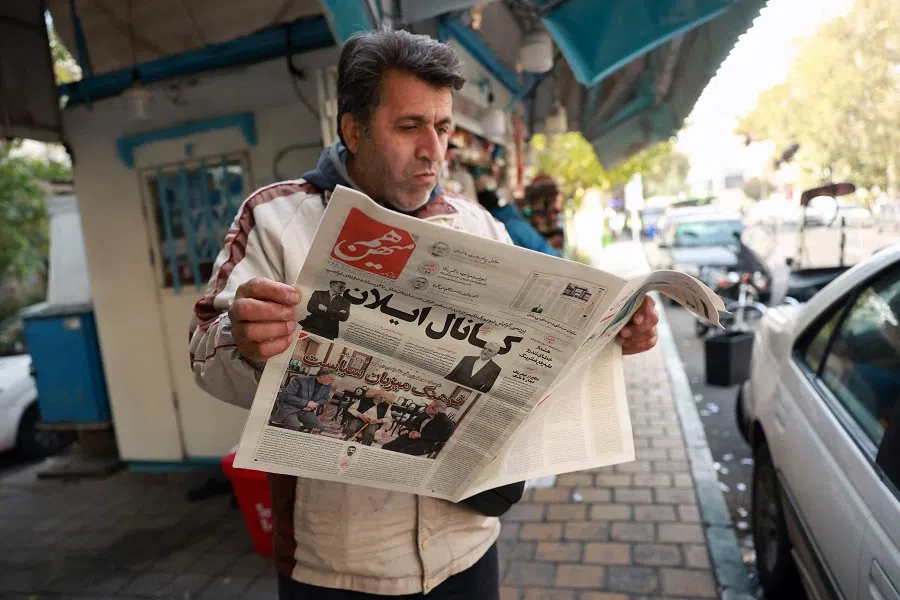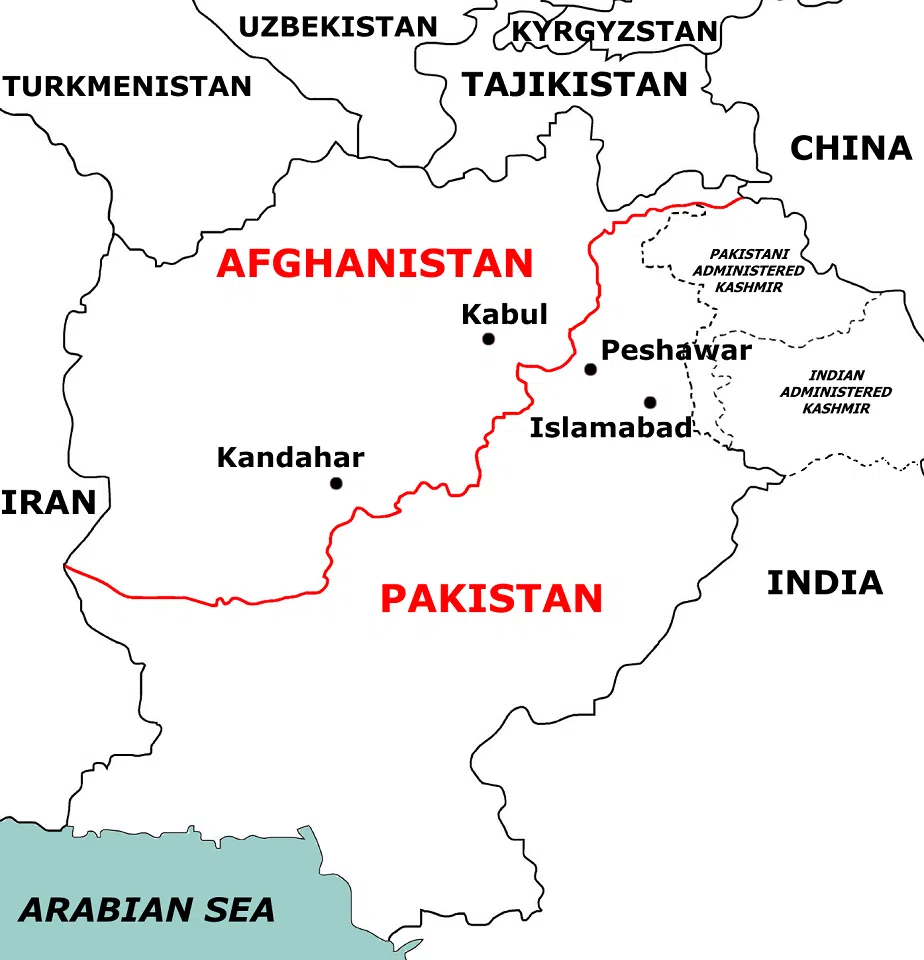Trump’s return: A seismic shift in geopolitics
With Donald Trump set to helm the US next year, the country’s relations with Russia, Iran and North Korea will see great shifts that could reshape the balance of international power and reset the global political and economic order, says academic Yerkin Nazarbay.

The 2024 US presidential election is the most geopolitically influential political event in the world since the new millennium. Its outcome could lead to a resurgence or redefinition of the North American continent, and even spark conflicts among the powers and vassals of the Eurasian continent. It is a historic watershed that will completely reshape the balance of international power and reset the global political and economic order.
Undoubtedly, US President-elect Donald Trump will rewrite US-China strategic relations. With his idea to “make America great again”, his strategic thinking and political philosophy has completely transformed the traditional trilateral competitive balance among the US, Russia and China that has spanned half a century.
With the onset of a new Cold War between the US and China, the strategy of aligning with China to contain Russia is now a thing of the past. Decentralised global manufacturing is gradually replacing the centralised “Made in China” model, as countries across Eurasia seize new opportunities arising from historical shifts. These nations are increasingly leveraging their unique geopolitical advantages, even if it means aligning with the US to contain China.
Russia’s ‘Look East’ strategy
The escalation of the Russia-Ukraine war has shown that the Kremlin no longer places hopes in the peaceful multipolar development and economic globalisation that has characterised the Eurasian continent since China joined the World Trade Organization (WTO) two decades ago. In its place is three years of a regression towards a multipolar wartime regional economic reconstruction across sectors.
Essentially, Russia, awakened by unprecedented wartime sanctions and strategic containment from the West, has embraced an extreme isolationist strategy to bolster its geopolitical standing.
Its success entirely depends on the stability, consolidation and alignment of its relationships with Iran in the Middle East and North Korea in the Far East...

Even as it signals to emerging economies on both sides of the Eurasian continent and the European Union that “it is better to be the head of a chicken than the tail of a phoenix”, Russia is also sending a signal of strategic cooperation to the US across the Pacific — a potentially disruptive geopolitical manoeuvre.
In other words, Russia’s strategic trajectory is set. Its “O-shaped” land-sea network spans Eurasia, from the Urals eastward across Siberia, the Qipchaq Steppe and the Mongolian Plateau to the Sea of Japan; and southward through the Caspian and Caucasus regions, Central Asia and the Iranian Plateau to the Persian Gulf, culminating in the South Asian subcontinent. This network connects the Arctic, Pacific and Indian Oceans.
Should the US and Russia see eye to eye, the global supply chain layout and international political power balance could instantly and permanently be altered. Under this new geopolitical structure, US-China relations may revert to the fundamental dynamics before China joined the WTO in 1999.
A potential reset in US-Russia relations in 2025 could significantly alter the geopolitical landscape, influencing the 2026 renewal of the China-Russia Treaty of Good-Neighborliness and Friendly Cooperation. This shift could even pave the way for a permanent resolution of lingering Far Eastern border disputes.
Ultimately, Russia’s “Look East” strategy is central to its geopolitical advantage. Its success entirely depends on the stability, consolidation and alignment of its relationships with Iran in the Middle East and North Korea in the Far East, along with India across Eurasian inland and Indo-Pacific coastal areas, rather than on the traditional Euro-Russia-China triangular core or horizontal inland expansion.
Iran’s ‘Look East’ strategy
The localised Israel-Hamas and Israel-Hezbollah conflicts, and the subsequent deaths of leaders within these armed groups, may appear to have deepened tensions between Iran and Israel, even triggering mutual long-range missile attacks and precise airstrikes. In fact, these developments expedited mutually beneficial progress within each party’s respective regional sphere, as encapsulated by the 19th-century German-Jewish jurist Rudolf von Jhering’s observation: “Peace without strife, and enjoyment without work, belong to the days of Paradise.”
... the Iranian regime must first leverage Israel, using bilateral or even multilateral military conflicts to eliminate peripheral burdens such as Hamas in Gaza, Hezbollah in Lebanon and the Houthis in Yemen.

On 10 December 10 2022, Iran summoned China’s ambassador to Tehran to express its displeasure over a joint statement issued after a China-Gulf Cooperation Council (GCC) summit. The statement concerned Iran’s control of three disputed Persian Gulf islands (Greater Tunb, Lesser Tunb and Abu Musa).
Since then, Iran has increasingly focused on leveraging its geopolitical advantages to break the maritime encirclement imposed by the Arabian peninsula coalition. This strategy could significantly impact the China-Pakistan Economic Corridor and potentially lead to the lifting of US sanctions on Iran.
To achieve this, the Iranian regime must first leverage Israel, using bilateral or even multilateral military conflicts to eliminate peripheral burdens such as Hamas in Gaza, Hezbollah in Lebanon and the Houthis in Yemen.
Next, Iran aims to seamlessly transfer its regional influence to Afghanistan’s western Shia Hazara region, centred around eastern Khorasan, establishing a pro-Iranian political force capable of influencing Kabul’s Taliban government and the Afghan nation-building process.

Simultaneously, this strategy involves fostering cooperation between Afghanistan’s eastern and western ethnic groups (Persian and Tajik) and promoting economic integration between the northern and southern regions (Iran and Turan) within the Southern Turkestan region of Afghanistan.
Finally, Iran must capitalise on internal Taliban conflicts within Pakistan and Afghanistan to influence the Pashtun political landscape along the Durand Line, while closely monitoring the security situation in Balochistan.

Iran would also need to shape the China-Pakistan Economic Corridor, a pivotal element of China’s Belt and Road Initiative (BRI), and develop its own “Look East” strategy focused on the Middle East, which will influence the China-Central Asia-West Asia Economic Corridor.
The 2018 US-North Korea summit in Singapore (the first Trump-Kim meeting), the 2019 Hanoi summit, and the trilateral meeting at Panmunjom between the US, North Korea and South Korea were significant achievements beyond Kim Jong Il’s reach.
North Korea’s ‘Look East’ strategy
The history of the Korean peninsula clearly shows that North and South Korea have always existed under dual pressures from northern and southern land-sea powers. Preventing the peninsula from becoming a colony of maritime powers or being entirely dominated by continental powers is a prerequisite for the survival of both states as enduring nation-states.
Unlike South Korea, North Korea, as a typical coastal continental power, relies entirely on the north-south power balance between land and sea powers for its overall security. When maritime powers press northward, Pyongyang must rely on the restraining influence of continental unifying forces to survive.
Only through mutual non-aggression between the North and South can the Kim family pursue independent strategic development, maximising benefits within the continental power balance of power between Russia and China.
As the first Western-educated North Korean supreme leader, Kim Jong Un has demonstrated highly sophisticated political skills in balancing the power dynamics among the US, Russia and China, surpassing his father Kim Jong Il and grandfather Kim Il-sung.
The 2018 US-North Korea summit in Singapore (the first Trump-Kim meeting), the 2019 Hanoi summit, and the trilateral meeting at Panmunjom between the US, North Korea and South Korea were significant achievements beyond Kim Jong Il’s reach.
These events were strategically significant in showing that North Korea-US relations were independent of the Russia-China-North Korea triangle, with the mutual trust between Trump and Kim Jong Un becoming a ballast for long-term peace and stability in the Korean peninsula and even the Northeast Asia-Pacific region.
This new geopolitical alignment, with its associated political principles and strategic outcomes, underpins Kim Jong-un’s consolidation of power, arguably elevating him above Kim Il-sung by effectively splitting the Russia-China-North Korea triangle.

Besides the six-year “strategic trust” between Kim Jong-un and Trump, the understanding between Kim and Russian President Vladimir Putin that has emerged within just a year has also drawn considerable attention. This new geopolitical alignment, with its associated political principles and strategic outcomes, underpins Kim Jong-un’s consolidation of power, arguably elevating him above Kim Il-sung by effectively splitting the Russia-China-North Korea triangle.
Pyongyang, with Russia and even the US
Pyongyang’s “Look East” strategy for the Far East is a “dual-circulation” approach encompassing both the northern Pacific and the eastern North Atlantic. This strategy relies on cultivating strategic understandings: one with Russia across the Eurasian heartland and another, potentially, with the US focused on the Asia-Pacific.
As for whether North Korea’s relations with Russia and the US can be further elevated depends entirely on the future cooperation between Trump and Putin in the Indo-Pacific region — that is, whether they can jointly control the 12 critical “geopolitical lifelines” of China’s BRI (six land corridors and six coastal regions) and fully integrate into Russia’s “O-shaped” land-sea strategic network.
It should not be forgotten that the North Korea-Russia alliance, based on the Comprehensive Strategic Partnership Treaty, is intended as a defence against land-based invasions, not as a stance against maritime powers.
The tacit geopolitical assumption that China is bound to clash with Russia or North Korea is the underlying rationale for the increasingly close Russia-North Korea ties and the rapid integration of their national defence and security.
This article was first published in Lianhe Zaobao as “特朗普凯旋开启“地缘价值”新时代”.





